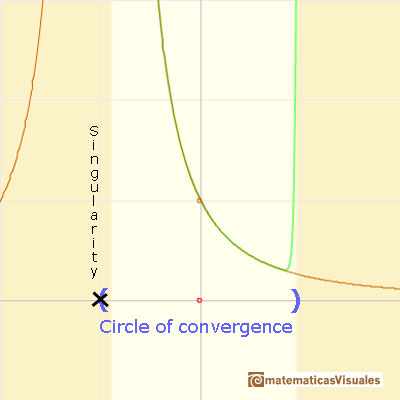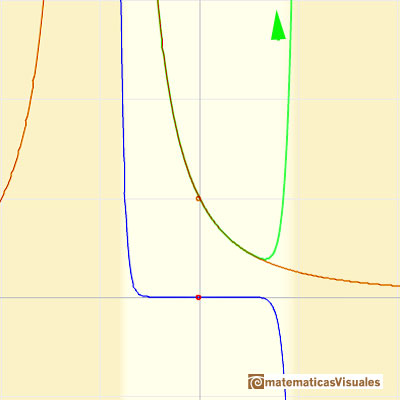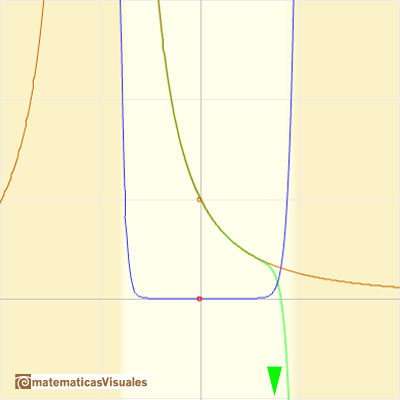
The rational function

is, as in the example of the square root or in the rational function 1, a special case of Newton's Binomial Theorem. We can calculate its Taylor's series at x = 0 easily.
This function has a singularity at the point x =- 1. The approximation is good in ranges from -1 to +1. Again we find a useful approach that is centered on the origin.

At the point x = +1 the ordinates increase indefinitely with the order, and alternate in sign.


We can compare this behavior with that of the rational function 1.
Klein wrote: "The theoretical consideration of Taylor's series cannot be made complete without going over to the complex variable. It is only then that one can understand the sudden ceasing of the power series to converge at places where the function is entirely regular. To be sure, one might be satisfied, in the case of our examples, by saying that the series cannot converge any farther to the right than to the left, and that the convergence must cease at the left because of the singularity at x = -1." (Klein, p. 227)
We can see more examples to understand better this question, for example in Taylor polynomials (6): Rational function with two real singularities.
REFERENCES
 NEXT
NEXT
 PREVIOUS
PREVIOUS
MORE LINKS
























